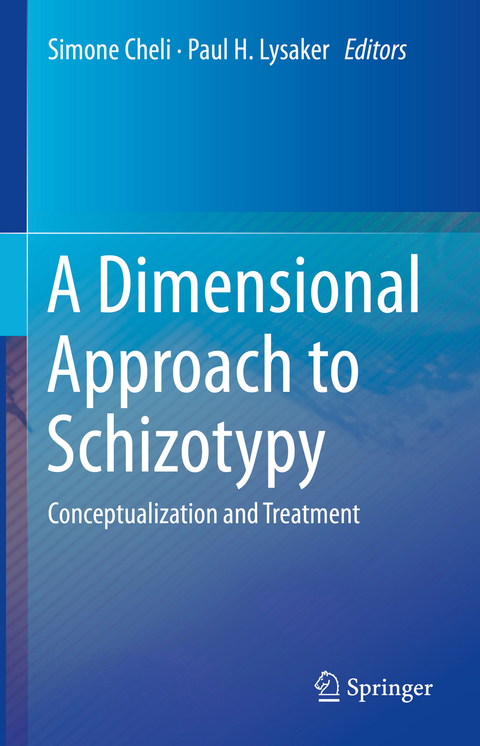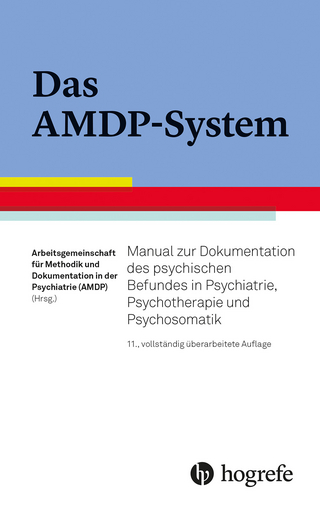
A Dimensional Approach to Schizotypy
Springer International Publishing (Verlag)
978-3-031-41787-0 (ISBN)
This timely volume explores the range of personality traits and psychosocial deficits which are associated with the broadly defined construct of schizotypy. Describing schizotypy as a phenomenon that can be located on a continuum ranging from sub-clinical states to severe disorders, the editors have brought together experts in this field to discuss approaches to assessment, conceptualization, and treatment. This volume aims to provide a unique and clinically oriented perspective on schizotypy as a feature of personality and psychopathology. An essential resource for professionals, researchers, and academics the reader will gain knowledge of:
- Underlying maladaptive traits that can emerge as schizotypy
- Dimensional and transdiagnostic approaches to psychopathology
- Relationship to metacognition, mentalizing, attachment, self-criticism and interpersonal criticism
lt;p>Simone Cheli, PhD is an adjunct professor at the St. John's University in Rome and founding director of Tages Onlus, a mental health charity located in Florence. A chartered psychologist, he is currently involved in testing a new integrative treatment for those struggling with schizotypal personality disorder, namely Evolutionary Systems Therapy for Schizotypy. His daily work is as therapist with persons diagnosed with personality disorders and psychosis.
Paul H. Lysaker, PhD is a Clinical Psychologist at the Richard L Roudebush VA Medical Center, Indianapolis, IN and a Professor of Clinical Psychology in the Department of Psychiatry at the Indiana University School of Medicine. He has over 35 years of experience providing recovery oriented psychotherapy to adults diagnosed with a serious mental illness and is an author of over 500 peer reviewed articles.
Part 1 - Schizotypy as a feature of personality and psychopathology.- The Neurodevelopmental Considerations of Schizotypy.- Evolutionary aspects of schizotypy.- Conceptualization of Schizotypy within the Hierarchical Taxonomy of Psychopathology and other Nosologies.- Psychosocial Functioning in Schizotypy: Potential Links to Social, Cognitive, and Affective Processes.- Schizotypal disorder: Phenomenological perspectives on diagnosis, psychopathology, and psychotherapy.- Conceptualization and Assessment of Multidimensional Schizotypy.- Schizotypy: a crosscultural approach - Quinton Deeley.- Part 2 - Transdiagnostic mechanisms.- Understanding the phenomenology of schizotypy and schizotypal personality disorder: An application of the integrative model of metacognition.- Linking personality and psychopathology: a mentalization-based treatment framework for the understanding of schizotypy-related psychopathology.- The role of attachment processes in the psychosis-spectrum.- Compassion Focused Therapy and schizotypy: An exploration of an evolution informed biopsychosocial approach.- Interpersonal Diagnosis of Schizotypy.- Part 3 - Integrated interventions CBT for Schizotypy and Psychosis: the role of trauma.- Compassion Focused approach to working with problematic belief systems.- Addressing Schizotypy in Metacognitive Reflection and Insight Therapy.- Metacognitive Interpersonal Therapy for Schizotypal Personality Disorder.- Evolutionary Systems Therapy for Schizotypy: An Integrated Look at Attachment, Compassion and Metacognition.- Mentalization-based Treatment for Schizotypal Personality.- A view on the treatment of schizotypy in terms of psychoanalysis.- Clinical staging of schizotypal disorder: Preliminary considerations and treatment implications.- Schizotypy and hikikomori, a severe form of social withdrawal syndrome.- A disorder of engaging in the world: Concluding remarks and future directions (Conclusions).
| Erscheinungsdatum | 11.10.2023 |
|---|---|
| Zusatzinfo | XVII, 361 p. 18 illus., 3 illus. in color. |
| Verlagsort | Cham |
| Sprache | englisch |
| Maße | 155 x 235 mm |
| Gewicht | 727 g |
| Themenwelt | Geisteswissenschaften ► Psychologie ► Klinische Psychologie |
| Schlagworte | Clinical psychology • Neuropsychology • Personality disorder • Personality psychology • psychopathology • psychotherapy • transdiagnostic assessment |
| ISBN-10 | 3-031-41787-9 / 3031417879 |
| ISBN-13 | 978-3-031-41787-0 / 9783031417870 |
| Zustand | Neuware |
| Haben Sie eine Frage zum Produkt? |
aus dem Bereich


